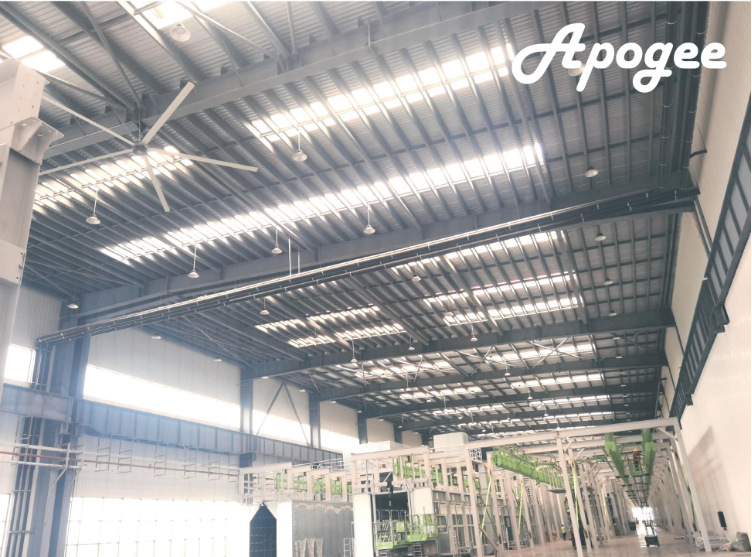Industrial ceiling fans are a staple in large commercial spaces, warehouses, and manufacturing facilities. Their design and functionality are rooted in the principles of physics and engineering, making them an essential tool for maintaining comfort and efficiency in expansive environments. Understanding the science behind industrial ceiling fans can help businesses optimize their use and enhance their operational effectiveness.
At the core of an industrial ceiling fan’s operation is the concept of airflow. These fans are engineered with large blades that can move a significant volume of air at low speeds. This design is crucial because it allows for the circulation of air without creating a disruptive wind tunnel effect. The blades are typically longer and wider than those of standard ceiling fans, enabling them to cover a larger area and push air downwards effectively.
Apogee Industrial Ceiling Fans
The principle of convection plays a vital role in how industrial ceiling fans work. As the fan blades rotate, they create a downward airflow that displaces warm air, which naturally rises to the ceiling. This process helps to equalize the temperature throughout the space, making it cooler in the summer and aiding in heat distribution during the winter months. By reversing the direction of the fan, businesses can also utilize these fans for heating purposes, drawing warm air down from the ceiling.
Moreover, the energy efficiency of industrial ceiling fans is noteworthy. They consume significantly less energy compared to traditional HVAC systems, making them an eco-friendly option for climate control. By reducing reliance on air conditioning, businesses can lower their energy costs while maintaining a comfortable environment for employees and customers alike.
In conclusion, the science behind industrial ceiling fans is a blend of aerodynamics, thermodynamics, and energy efficiency. By understanding how these fans work, businesses can leverage their benefits to create a more comfortable and cost-effective workspace.
Post time: Feb-12-2025


